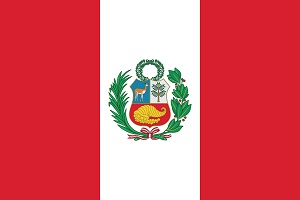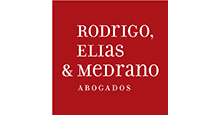
Peru
Environmental, Social & Governance
1 . How is “ESG” in your jurisdiction defined in a corporate/commercial context, and what are its major elements?
There is no legal definition of “ESG” in the Peruvian legal framework. Therefore, when used in a corporate/commercial context, companies must incorporate the definitions of soft non-binding laws issued by international organizations (mainly, the United Nations). However, even though the concept of ESG has not yet been legally defined, it has been implicitly incorporated in certain laws and regulations approved for different economic sectors. Such laws and regulations focus on the disclosure and provision of information on issues related to social corporate responsibility, community relationship matters and sustainable development, among others.
2 . What, if any, are the major laws/regulations in your jurisdiction specifically related to ESG?
ESG matters have not been regulated in a single unified text. However, the importance of ESG issues has been recognized by legal dispositions scattered in the regulations of different economic sectors. Thus, probably the most important are:
- Supreme Decree No. 052-2010-EM, which establishes that mining titleholders have to submit an Annual Affidavit containing information about the sustainable development activities executed by them during the previous year. The information provided in the Annual Affidavit covers the following matters:
- education;
- health;
- nutrition;
- local employment; and
- basic infrastructure, among others.
- Supreme Decree No. 019-2009-MINAM, which regulates the National System of Environmental Impact Management. According to said regulation, titleholders of investment projects which generate environmental impacts must obtain the approval of an environmental management instrument prior to the execution of its activities. The procedure to obtain the approval of an environmental management instrument has a public participatory nature, in which stakeholders disclose information about the project, its potential impacts, as well as the environmental management measures to be adopted in order to prevent any negative environmental impact.
On the other hand, environmental management instruments include a “community relationship plan”. A community relationship plan aims at achieving a healthy coexistence between the titleholders of an investment project and its stakeholders during the different stages of the project. Such plans cover actions related to the disclosure of information regarding:- the development of the investment project;
- the channels through which stakeholders can raise objections to the investment project;
- the code of conduct that must be complied by the titleholder of the investment project;
- specific programs for hiring local labor and for the local development that will be implemented by the titleholder of the investment project.
- Superintendent's Resolution No. 018-2020-SMV/02 approves the Corporate Sustainability Report, whose purpose is to provide shareholders, investors, and other stakeholders with relevant and accurate information on the policies, standards and actions that issuers are implementing to ensure their sustainability in the long term. The information to be presented in this report refers to the actions and standards implemented by a company in relation to the impact of its operations on the environment and social development. Specifically, companies provide information on:
- their environmental policy;
- greenhouse gas emissions;
- water and energy consumption;
- solid waste generation;
- relationship with their stakeholders;
- labor rights;
- human rights, and so on.
3 . What other laws/regulations in your jurisdiction touch on ESG themes?
Peru has laws and regulations that tangentially regulate matters related to ESG themes.
For instance, the General Environmental Law (Law 28611) contains a general reference to the promotion of “social corporate responsibility”.
On the other hand, in recent years, due to corruption scandals that involved past Governments, new laws relating to corporate governance have been issued. These laws mainly regulate the criminal liability of corporations, their directors and managers, as well as anti-bribery and anti-money laundering.
4 . What, if any, litigation or enforcement activity has your jurisdiction seen related to ESG?
There has been no litigation or enforcement activity in Peru directly related to ESG. However, in relation to advertising matters, there have been cases in which companies have been denounced or sanctioned for disclosing false or inaccurate information, or for not complying with the consumer protection standards issued by Peru’s National Consumer Protection Authority (INDECOPI). In fact, there are cases in which the inaccuracy of the information provided has been related to the fact that the products had ecological characteristics or were produced respecting the environment (greenwashing). Although advertising regulation is not directly related to ESG matters, it is a regulation that emphasizes the quality, quantity, type and accuracy of the information provided to consumers. For that reason, we mention it as an example, since it shows that when it comes to the disclosure of information, there have already been sanctions imposed by Peruvian regulators.
On the other hand, in the past few years, public prosecutors have been very active in investigating corruption scandals within a corporate and commercial context, which has forced Peruvian companies to adopt corporate measures to avoid criminal liability. The implementation of compliance programs and anti-bribery and anti-money laundering training is mandatory for certain industries, such as legal services, banking & finance, etc.
5 . What are the major non-law/regulatory drivers of ESG trends and developments in your jurisdiction?
Probably, the main driver for the promotion and development of ESG regulation in the country is given by the weight that this kind of information has on investors. For them, this information is a key element when analysing and choosing one investment from another. Therefore, it is possible to point out that, eventually, the main trend in ESG regulation comes from the securities market.
However, another major driver for promoting ESG regulation comes from the mining sector. In fact, the mining industry is one of the pillars of the Peruvian economy and arguably the most important sector. It is extremely important to conduct mining activities with a social management strategy aiming to promote and seek the participation and inclusion of every stakeholder. It is for this reason that mining regulation, along with the securities market regulation, has been the pioneer in enacting legal dispositions related to ESG matters (see Question 2), for regulating the disclosure of information on how mining companies promote sustainable development.
Soft non-binding laws
It is common for Peruvian companies to include references to the UN Guiding Principles of Business and Human Rights, the OECD Guidelines for Multinational Enterprises and the ILO Convention on forced labor in their agreements.
Stakeholders
In addition to the mining sector, there are two groups which are particularly engaged in the promotion of ESG in Peru: local and international NGOs and financial institutions. International corporations are also very active in pushing a sustainable corporate agenda, but this is related to their corporate policies as an economic group, rather than a local initiative.
6 . Are the laws, regulations and obligations highlighted in Question 2 primarily related to corporate disclosure?
Not all of the legal dispositions mentioned in Question 2 are related to the disclosure of information. In fact, in the case of mining regulation, the Annual Affidavit regulated by Supreme Decree No. 052-2010-EM does not have a public nature. Therefore, it contains data about sustainable development measures and investments that will only be disclosed to the Ministry of Energy and Mines.
Regarding Supreme Decree No. 019-2009-MINAM and the obligation of operating with a community relationship plan as part of the environmental management instrument, the actions contained in the community relationship plan are linked to corporate disclosure. Indeed, among others, community relationship plans encourage the disclosure of information about the development of an investment project in favor of its stakeholders.
Reporting
Since 2015, companies listed on the Lima Stock Exchange are obligated to submit yearly sustainability reports. The Corporate Sustainability Report, required to be submitted by all issuers with securities registered in the Public Registry of the Securities Market, is essentially comprised of information that will enable shareholders, investors and other stakeholders to have relevant and accurate information on the policies, standards and actions that issuers are implementing to ensure their long-term sustainability.
7 . Which sectors are most impacted by ESG in your jurisdiction? How significant is ESG investment in your jurisdiction?
In our view, financial institutions, issuers with securities registered in the Public Registry of the Securities Market, mining, electricity and oil & gas companies are the economic sectors most impacted by ESG in Peru. These are subject to a heavy public scrutiny, which has led to a demand for mining and oil & gas companies to pursue a sustainable corporate agenda. Moreover, specific public participation regulations have been approved for mining, electricity and oil & gas companies (by means of Supreme Decree No. 002-2019-EM, Ministerial Resolution No. 223-2010-MEM/DM, and Supreme Decree No. 028-2008-EM, the Citizen Participation Regulations for oil & gas, electrical and mining activities, respectively, were approved) to:
- strengthen the stakeholders’ rights of access to information and citizen participation;
- promote healthy relationships between the stakeholders, the State and the projects’ titleholders; and,
- provide the environmental competent authorities with sufficient information to take decisions on the environmental and social management of the economic sectors mentioned above.
In the case of the mining sector, regulations have even been approved to disclose information before the Ministry of Energy and Mines on how mining companies promote sustainable development (i.e. Supreme Decree No. 052-2010-EM, see Question 2). Additionally, when submitting a mining pediment for obtaining the granting of a mining concession, titleholders have to sign an affidavit by means of which they declare that they will execute sustainable development actions when executing their activities.
8 . What are the trends in your jurisdiction regarding ESG governance?
There have been some advances in Peru in terms of corporate compliance and governance, and the promotion of an ethical business culture, specifically in connection with the implementation of compliance programs in organizations. In fact, in recent years, the regulations related to “crime prevention models” (Law No. 30424, “Law that regulates corporate liability for corruption and money laundering offenses, and its Regulations) and to anti-money laundering and counter terrorism financing (AML/CFT regulations) require that top management bodies assume the duty to implement and supervise compliance programs.
For example, regulations of Law No. 30424, explicitly states that the highest government, administrative and senior management bodies of a legal entity or those acting on their behalf, are responsible for leading the implementation and adequate functioning of the prevention model, through their commitment and firm, active and visible support. This implies that these bodies have a leading responsibility in the appropriate execution and functioning of the compliance program and are accountable before the company.
In addition to this, Law No. 30424 and in AML/CFT regulations, designing a prevention officer or compliance officer by the company’s highest governing body is established as a minimum component of these systems. Unfortunately, there is still a belief that the role of the governing and administrative bodies begins and ends with this designation (and in the case of AML/CFT systems, that it would also end with the approval of the internal policies and relevant documents), which is inaccurate.
9 . To what extent are ESG ratings or ESG benchmarks relied upon in your jurisdiction?
ESG rating agencies
The S&P/BVL Peru General ESG Index was launched by the Lima Stock Exchange (Bolsa de Valores de Lima) in November 2021. The Peruvian ESG Index was designed to reflect the performance of the companies listed in the S&P/BVL Peru General Index and that meet the environmental, social and governance criteria defined in S&P Global’s Corporate Sustainability Assessment. Currently, there are 15 companies that make part of the S&P/BVL Peru General ESG Index.
ESG benchmarks
The Lima Stock Exchange refers to S&P Global’s Corporate Sustainability Assessment.
10 . What is the role of the private markets versus public markets in driving ESG developments in your jurisdiction?
Private companies
Private companies are, principally, integrating ESG issues into their business strategies by adhering to the principles and reporting frameworks of renowned NGOs (such as, the UN Global Compact, the Global Reporting Initiative, and, locally, Peru Sostenible) and by complying with the regulations (see Question 2) when applicable. This is in addition to the internal policies of the larger multinational economic groups to which Peruvian subsidiaries are also bound. For instance, internal corporate regulations governing the relationship that a certain company, its workers and suppliers or service providers must have with local communities.
Public companies
Public companies follow the same trend as private companies. In our view, there is no major difference between the role of private and public markets in respect of ESG requirements in Peru.
Government-owned organizations
Currently, ESG considerations are not key in government-owned organizations, or in organizations in which the government has a stake.
ESG agenda
Principally, the ESG agenda in Peru is pushed by private stakeholders, along with the work of NGO’s (for example, the UN Global Compact or the Global Reporting Initiative) This ESG agenda is increasingly responsive to global trends.
11 . What are the major challenges in terms of compliance for companies under ESG obligations?
The Peruvian economy is mainly informal. Peru’s main challenge in terms of compliance under ESG obligations is to start formalizing the economy. This will allow the Government to have a broader supervision of the different activities and obligations of the companies and facilitate the enforcement of ESG obligations.
The informal economy has resulted in limited data regarding the compliance of companies with their legal (environmental and social, for example) obligations, and is the main barrier to effective ESG measures in Peru.
As mentioned, there are a few legal disclosure obligations related to ESG matters in Peru. Consequently, other than those already described related to compliance, anti-bribery, anti-money laundering and anti-corruption laws, companies in Peru do not face any additional legal challenges in respect of compliance under ESG matters.
12 . What information sources are most relevant for ESG considerations in your jurisdiction?
The most relevant information sources for ESG considerations in Peru are high profile NGOs. For example, Peru Sostenible is a corporate network whose purpose is to promote the UN’s Sustainable Development Goals within Peru. Peru Sostenible gathers information on more than 80 companies within different economic sectors.
The Global Reporting Initiative is the main private measurement frameworks that companies are integrating into their business models in Peru.
Regarding the public sector, the Ministry of Environment has implemented the National Registry of Mitigation Measures (RENAMI, for its acronym in Spanish) which has the purpose of collecting, recording, monitoring and managing the information on the advances of the reduction of greenhouse gas emissions by means of the execution of mitigation measures, which can be developed by private and public entities. The information recorded in the RENAMI has a public nature.
Additionally, the Ministry of Environment has implemented the program “Huella de Carbono-Perú”, which allows public and private entities to be officially recognized for efforts in reducing greenhouse gas emissions, by means of the measurement and reporting of actions to reduce and/or neutralize them. The information contained in this program has a public nature.
Finally, the Superintendence of the Securities Market issues a report that consolidates all the information provided by issuers in the Consolidated Sustainability Report.
13 . Has your jurisdiction developed a Taxonomy related to ESG?
There is no ESG related taxonomy in Peru.
14 . What does the future hold for ESG in your jurisdiction?
In our view, Peru will continue to follow global trends and demands in respect of ESG matters. In the short term, Peruvian authorities will continue to focus on issuing and enforcing regulations in anti-corruption, anti-bribery and anti-money laundering matters.
In the medium term, private and public companies will continue to voluntarily incorporate an ESG agenda to their businesses. This trend will include all big, medium and small companies (medium and small companies have the highest participation in the Global Reporting Initiative). This will be coupled with a continued effort to formalize the Peruvian economy, which is a major step for broadening the ESG enforcement in Peru (and to have more reliable information regarding its compliance).
In the long term, we expect the Peruvian government to generate a comprehensive ESG legal framework, which clearly sets the obligations and rights of all stakeholders in a corporate context. This will most likely be coupled with the creation of a specialized enforcement agency in ESG matters.
3-6 PQE Corporate M&A Associate
Job location: London
Projects/Energy Associate
Job location: London
3 PQE Banking and Finance Associate, Jersey
Job location: Jersey


 Claudio Ferrero Merino
Claudio Ferrero Merino Francisco Tong
Francisco Tong Tomás Denegri Vargas
Tomás Denegri Vargas Ursula Zavala
Ursula Zavala

